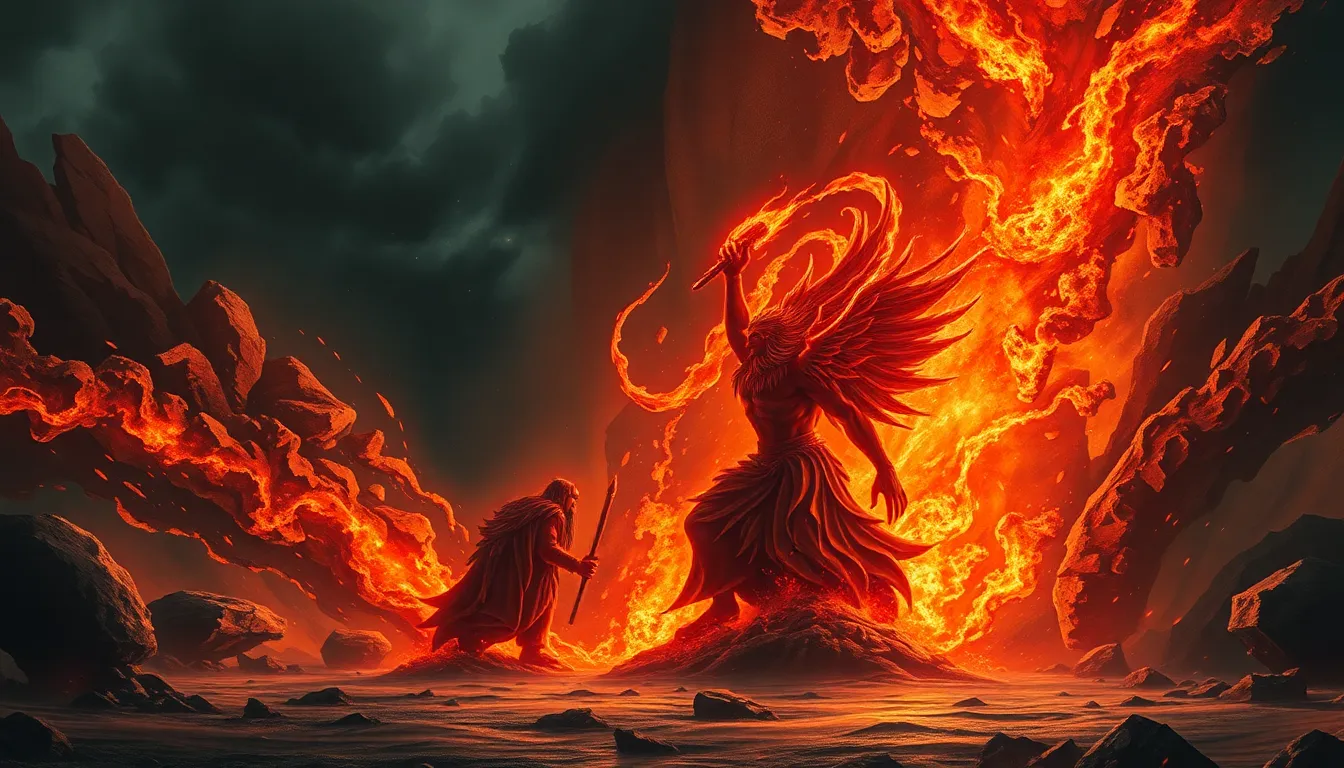From Olympus to Fuji: The Mythical Significance of the World’s Great Peaks
I. Introduction
Mountains have always held a special place in the human psyche. They are not merely geographical features but symbols steeped in mythology, spirituality, and cultural significance. From the towering heights of Mount Olympus to the iconic silhouette of Mount Fuji, these great peaks have inspired countless narratives that shape our understanding of nature and the divine.
This article explores the mythical narratives surrounding prominent mountains, examining their cultural significance throughout human history and the profound impact they have on societies across the globe.
II. Mount Olympus: The Home of the Gods
Mount Olympus, the highest mountain in Greece, stands at 2,917 meters and is a pivotal symbol in Greek mythology. It is traditionally considered the dwelling place of the Olympian gods, including Zeus, Hera, and Poseidon. The mountain’s imposing presence has not only shaped the landscape but also the cultural and religious practices of ancient Greece.
- Historical and Geographical Significance: Olympus is located in northern Greece and is part of the Olympus Mountain range, known for its rich biodiversity and dramatic landscapes.
- Pantheon of Greek Mythology: The stories of the gods residing on Olympus influenced many aspects of ancient Greek life, from religion to art and literature.
- Influence on Culture and Religion: Festivals such as the Olympic Games were held in honor of the gods, emphasizing Olympus’ central role in Greek spirituality.
III. The Mystique of Mount Fuji
Mount Fuji, or Fuji-san, is Japan’s highest peak and an iconic symbol of the nation. Its symmetrical cone shape has captivated artists and pilgrims for centuries, embodying both beauty and spiritual significance.
- Cultural and Spiritual Importance: Fuji is revered in Shintoism and Buddhism, seen as a sacred entity that embodies the spirit of Japan.
- Legends and Deities: Various deities, such as Konohanasakuya-hime, are associated with the mountain, representing life and fertility.
- The Role in Art and Pilgrimage: Fuji has been a popular subject in art, especially in ukiyo-e woodblock prints, and continues to attract pilgrims seeking spiritual enlightenment.
IV. The Himalayas: Peaks of Spiritual Awakening
The Himalayas, home to the world’s tallest peaks, including Mount Everest and Kangchenjunga, are revered as sacred in various religions, particularly Hinduism and Buddhism.
- Overview of the Range: The Himalayas stretch across five countries: India, Nepal, Bhutan, China, and Pakistan, forming a natural barrier and a spiritual haven.
- Sacred Significance: Mountains like K2 and Kangchenjunga are considered abodes of gods and are central to religious narratives and practices.
- Impact on Spiritual Practices: The mountains serve as a backdrop for meditation and spiritual quests, drawing seekers from around the world.
V. The Andes: The Mythology of the Incan Empire
The Andes mountains are a vital part of South American history, particularly for the Incan civilization. The peaks of the Andes are steeped in mythology and continue to play a significant role in the cultural identity of the region.
- Role in Incan Civilization: The Inca regarded the mountains as sacred and believed they were the home of their gods, reflecting their deep spiritual connection to the land.
- Sacred Peaks: Mountains like Ausangate are associated with various Incan deities and are integral to their agricultural and ritual practices.
- Modern Interpretations: Today, efforts are being made to preserve and honor Andean mythology as a vital part of cultural heritage.
VI. The Alps: Legends and Lore of Europe’s Crown
The Alps have long been a source of inspiration and legend in European culture. Their majestic peaks have been the backdrop for countless stories and adventures.
- Historical Significance: The Alps have served as natural barriers, trade routes, and cultural crossroads throughout history.
- Myths and Folklore: Prominent peaks such as Mont Blanc are steeped in legends, from tales of monstrous creatures to heroic climbers.
- Symbol of Adventure: The Alps are celebrated in literature and art as symbols of exploration and the sublime beauty of nature.
VII. The Rockies: Indigenous Myths and Modern Reverence
The Rocky Mountains are rich in cultural significance, especially for Indigenous peoples who have inhabited the region for millennia.
- Cultural Significance: Various Native American tribes view the Rockies as sacred and integral to their cultural identity and spiritual practices.
- Legends and Stories: Oral traditions convey the deep respect and reverence Indigenous peoples hold for these majestic mountains.
- Contemporary Culture: The Rockies are celebrated in modern culture, contributing to conservation efforts and outdoor recreation.
VIII. Kilimanjaro: The Mythical Mountain of Tanzania
Kilimanjaro, Africa’s highest peak, stands as a symbol of beauty and adventure, deeply woven into the fabric of local folklore and identity.
- Representation in Folklore: Local legends tell of its origins and the spirits that inhabit its slopes, highlighting its importance to the communities surrounding it.
- Role in Identity: For the Chaga people, Kilimanjaro is a source of pride and identity, featuring prominently in their cultural narratives.
- Allure for Adventurers: The mountain attracts climbers and tourists, impacting local economies and conservation efforts.
IX. The Role of Mountains in Modern Mythology
In contemporary society, mountains continue to inspire new myths and narratives, reflecting our evolving relationship with nature. They symbolize resilience, adventure, and the quest for understanding in a rapidly changing world.
- Environmental Narratives: Mountains are often central to discussions about climate change and conservation, becoming symbols of the fight for environmental justice.
- Spiritual Journeys: Many seek the solace and tranquility of mountains as a way to reconnect with nature and themselves, creating new myths of personal awakening.
- Cultural Expressions: Through art, literature, and film, mountains continue to serve as powerful metaphors for human experience.
In conclusion, mountains are more than just physical formations; they are integral to the mythology, culture, and spirituality of humanity. From the gods of Olympus to the sacred peaks of the Andes and beyond, these great heights inspire awe and reverence, continuing to shape the narratives we tell about our world.



